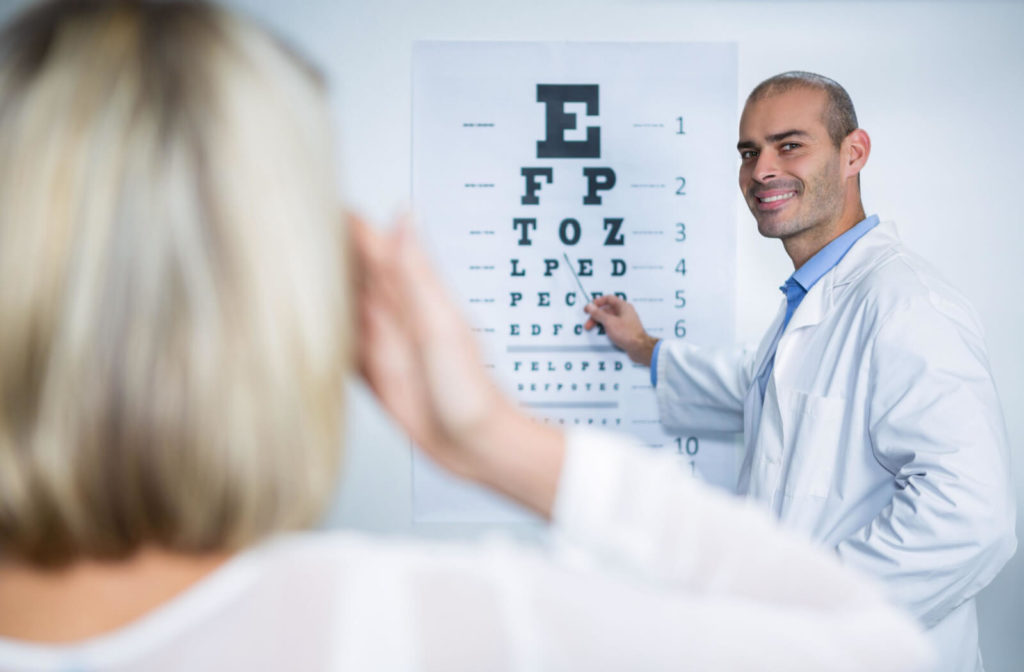Discover a Trusted Optometrist Chino for Household Eye Care Solutions
Wiki Article
Discovering the most up to date Technological Innovations in Optometry and What They Mean for Eye Doctors
In the ever-evolving field of optometry, recent technical developments are improving exactly how professionals come close to eye care. From the precision of Optical Comprehensibility Tomography to the nuanced insights offered by AI-driven diagnostic devices, these advancements are setting brand-new criteria in client analysis and therapy. Teleoptometry is positioned to redefine access, making sure that expertise transcends geographical constraints. As these innovations permeate the method, optometrists are faced with the difficulty of embracing these devices to enhance patient end results. The inquiry continues to be: exactly how will these technical changes redefine the roles and responsibilities within the profession?Developments in Diagnostic Tools
Advancing the field of optometry, innovations in diagnostic devices have changed the way eye care experts evaluate and identify eye problems and aesthetic problems. The previous decade has actually seen substantial technological developments, making it possible for even more accurate and comprehensive examinations. Optical Coherence Tomography (OCT), as an example, offers high-resolution cross-sectional images of the retina, permitting for the early detection of diseases such as glaucoma and age-related macular deterioration. This non-invasive imaging strategy has actually become indispensable in modern optometric technique.Another trick advancement is the intro of advanced corneal topography systems, which map the surface curvature of the cornea with accuracy. These devices are particularly helpful for fitting get in touch with lenses and detecting corneal conditions. Additionally, digital retinal imaging has actually transformed standard ophthalmoscopy, using comprehensive, scenic views of the retina that assist in extensive aesthetic examinations.
The development of wavefront aberrometry has actually additionally been crucial, enabling the evaluation of refractive errors with unequaled accuracy (Eye Doctor Optometrist). This innovation assists in tailoring rehabilitative lenses and enhancing surgical outcomes for refractive surgeries. Jointly, these diagnostic advancements encourage eye doctors to deliver exceptional individual care, guaranteeing early intervention and tailored treatment strategies, inevitably enhancing visual health outcomes
AI in Person Management
Structure on the structure of innovative diagnostic devices, the incorporation of artificial intelligence (AI) in individual monitoring stands for a transformative leap for optometry. AI systems are increasingly employed to boost effectiveness, precision, and personalization in individual treatment. By assessing vast quantities of information, AI can determine patterns and forecast possible ocular problems, enabling eye doctors to tailor interventions better. This capacity is vital in handling persistent eye illness such as glaucoma and diabetic person retinopathy, where early detection and constant monitoring are vital.Additionally, AI-driven systems assist in structured individual communications and management procedures. Automated scheduling, virtual appointments, and individualized follow-up plans not only enhance individual contentment however likewise maximize time management for experts. These systems can triage individuals based on the necessity of their problems, ensuring that those in vital demand receive timely interest.
Furthermore, AI improves decision-making by providing eye doctors with evidence-based recommendations and therapy pathways. By integrating information from electronic health and wellness records, AI tools provide understandings that notify medical decisions, minimizing the threat of mistakes and boosting client end results. As AI proceeds to evolve, its duty in individual management will likely broaden, reshaping the landscape of optometric treatment.
Advancements in Retinal Imaging
In the world of optometry, retinal imaging has experienced remarkable technical improvements that are boosting diagnostic capabilities and person treatment. Technologies such as Optical Coherence Tomography (OCT) and fundus digital photography have changed how eye doctors picture and analyze the retina.Enhanced imaging methods like OCT angiography are further refining diagnostic precision. Eye Doctor Optometrist. Such innovations promote the recognition of minute retinal adjustments that can indicate disease progression.
In addition, advancements in expert system are increasing retinal imaging by enabling computerized analysis of large datasets. These systems help optometrists in determining patterns a sign of pathology, therefore enhancing diagnostic accuracy and performance. Collectively, these developments are changing retinal imaging right into a keystone of modern eye care, improving results and broadening healing possibilities.
Teleoptometry's Expanding Duty
Teleoptometry is increasingly becoming an essential part of eye treatment, driven by improvements in digital communication and analysis tools. This is particularly beneficial in underserved and rural areas where accessibility to specialized eye treatment is typically limited.The assimilation of expert system (AI) more enhances teleoptometry, allowing the evaluation of visual information and helping in Go Here the discovery of eye problems such as glaucoma and diabetic retinopathy. AI-powered formulas can rapidly interpret complex imaging information, providing eye doctors with valuable understandings that reinforce clinical decision-making.
Moreover, teleoptometry supports continuity of treatment through smooth combination with electronic health documents (EHRs), enabling eye doctors to keep detailed person backgrounds. When seeking advice from with various practitioners., this makes sure that clients get consistent and tailored treatment even.
Despite these benefits, obstacles continue to be, including guaranteeing data safety and handling client assumptions. Teleoptometry represents a substantial stride in the direction of even more obtainable, effective, and patient-centered eye treatment. As technology progresses, its function is poised to expand additionally.

Future Patterns in Eye Care
A myriad of innovative patterns is readied to reshape the future of eye treatment, driven by technological improvements and the evolving needs of patients. One significant fad is the combination of expert system (AI) in diagnostics, which assures to improve the accuracy and performance of eye examinations. AI algorithms can examine huge quantities of information from retinal photos, potentially identifying conditions like diabetic person retinopathy and glaucoma earlier than typical techniques.Furthermore, personalized medicine is gaining grip in optometry, with genetic testing informing personalized treatment plans. This technique aims to maximize patient outcomes by tailoring interventions to specific hereditary profiles. Wearable technology, such as smart call lenses, is also imminent, using real-time surveillance of intraocular pressure or sugar levels, thus offering continuous insights right into systemic and eye wellness.
The adoption of increased fact (AR) and online fact (VIRTUAL REALITY) in training and person education is an additional arising pattern. These technologies offer immersive experiences that can enhance understanding and skills both for eye doctors and patients. As these patterns develop, eye doctors have to stay abreast of technological developments to offer advanced treatment, ensuring enhanced patient results and fulfillment in the dynamic landscape of eye treatment.
Verdict

Jointly, these analysis innovations encourage eye doctors to supply premium individual care, ensuring very early intervention and tailored therapy approaches, eventually improving visual wellness results.

As these innovations proceed to progress, optometrists need to adjust and incorporate them right into practice, ultimately enhancing operations efficiency and boosting the standard of eye treatment delivered to people.
Report this wiki page